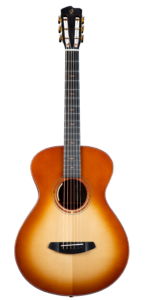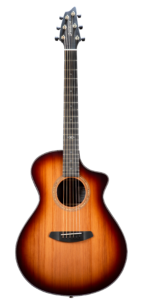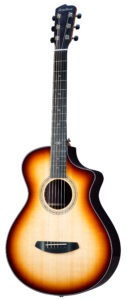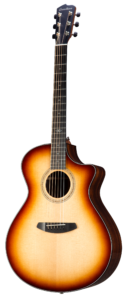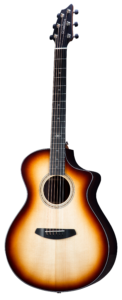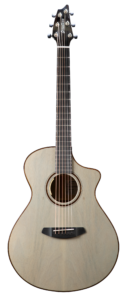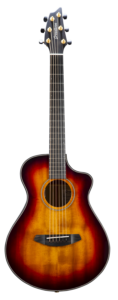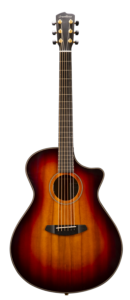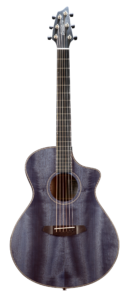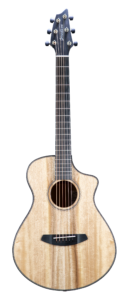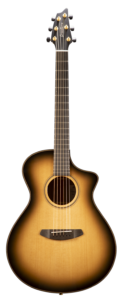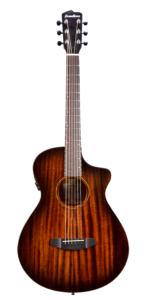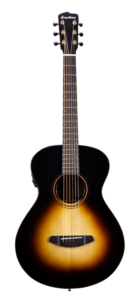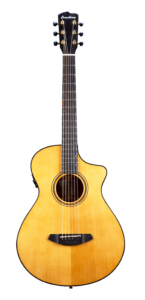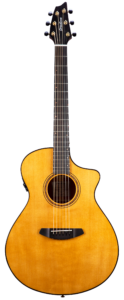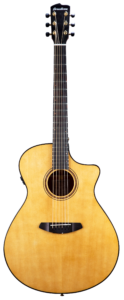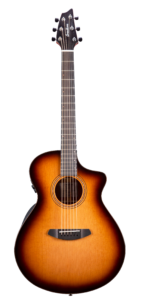Blackwood
Overview
While Brazilian rosewood remains the standard wood for comparing sounds made by guitars, many musicians choose the Tasmanian or Australian Blackwood as their guitar tonewood. The sounds and tones these guitars make is “sweet,” and distinct. It is different from the Brazilian rosewood tone, and adds a certain beauty and nuance to the tune and sound of the instrument.
African blackwood is denser and harder than either ebony or Brazilian rosewood. It is perhaps the ultimate wood for power, clarity, punch, and harmonic complexity. It has a tight, but robust sound; powerful and crisp; a dark bell-like overtone with a slow response. onally, it is not as deep as Brazilian rosewood, and not as tight as mahogany. It has a straight grain, and very fine texture with an oily surface. Strikingly different from other rosewoods in that it is black in color, and often with sapwood showing up in the guitar pattern.
AUSTRALIAN BLACKWOOD - A FANTASTIC GUITAR BACK AND SIDE GUITAR WOOD
Other names by which people know the Australian Blackwood are the Tasmanian Blackwood and Acacia Blackwood. Its scientific name is Acacia melanoxylon, and it is a native of Eastern Australian and Tasmania. However, farmers have introduced the wood to some parts of South America, Southern Asia, and Africa over several the years.
The trees usually grows to a height of 65-100 ft and can be 2-3 ft in diameter at the trunk. The color varies drastically, but it tends to be a medium reddish-brown or golden wood. This makes it look similar to Mahogany and Koa wood in some of the pattering and texture, but it is usually substantially darker and the tonal characteristics can be different and distinct. The bands tend to appear in contrasting colors with the growth rings, and may have ribbon-like streaks. Some boards can have curly grain with wavy designs, but this is very rare.
The texture of the grain is fine most of the time, but may be medium in some cases. The wood is moderately durable and resistant to decay. However, it can be susceptible to insect attacks if not kept away from harmful parasitic insects that feed on wood.
The good thing about the Australian Blackwood is that it is highly workable using hand and machine tools. However, its noted that the more figured piece can be more challenging to work with. The wood looks visually stunning when finished with a high gloss finish.
History with Building Guitars
Since this tree is a close relative of the Koa wood, which has been around for many years and has been considered a highly desirable tonewood for crafting guitars for the past five decades, there is a high possibility that people have used the Australian Blackwood to make guitars for at least three decades.
Why It’s Good for Guitar Building
This wood is very similar to the Hawaiian Koa wood and the sound and tone can be similar on occasion, with a meaty blend of the sound Mahogany tonewoods produce. This makes it ideal for making guitars. Moreover, it has no distinctive odor, and it offers amazing value for its durability.
The Australian Blackwood possesses moderate rot resistant in nature, and susceptible to insect attacks. However, with varnish and proper maintenance, the wood can look remain amazing looking for many generations. Also, if you are looking for a tonewood that does not cause allergies, then this is one of the best options for you.
